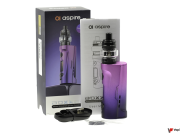Using artificial intelligence, the facial recognition camera analyses the buyer’s facial features, including skin condition and wrinkles, to estimate their age. If the individual appears to be over 25, the transaction proceeds. However, if there is uncertainty about the buyer’s age, the machine prompts them to present identification.
Theo Snijders, the CEO of the company behind the scanning technology, H@nd, likened the process to security measures at airports. Legal guidelines governing the scanning procedure have been established in collaboration with the NVWA product safety organization, privacy watchdogs, and legal experts, to safeguard buyers’ personal data.
Importantly, the scanner does not retain any personal data and solely records the number of scans conducted. Meanwhile, it is emphasized that using the facial scan is not mandatory in order to purchase tobacco, as that would violate privacy laws. To this effect, many find it pointless, as naturally anyone underage wishing to purchase tobacco could simply choose to not have their faces scanned.
Opinions about the scanning process vary among adult smokers too. Some individuals expressed willingness to undergo the scan if it helps enforce age restrictions. Others voiced concerns about data privacy and the time-consuming nature of the process, indicating that many smokers will refrain from using the technology.
Do the Netherlands’ tobacco control efforts make sense?
In recent years, the Netherlands has been actively setting various tobacco control measures. As of this July, tobacco products will only be available for purchase at specialized stores and petrol stations. While when in February 2022 the European Court of Justice has cleared the official ISO EU test, testing how much tar, nicotine and other chemicals are emitted by cigarettes, some local anti-tobacco entities asked local judges in Rotterdam to ban the technique.
The ban request came in response to tests by Dutch public health institute RIVM, which had indicated that when tiny holes in cigarette filters are covered up, as a result of smoking, the amount of tar can be up to 26 times the official norm. Sadly, the official ISO EU test leaves these holes uncovered, hence its effectivity is questionable.
What is unfortunate is that harsh restrictions have also been placed on safer nicotine alternatives that many smokers would turn to in order to quit smoking. In January 2022, the Netherlands banned the display of tobacco products both online and in retail stores. This expansion of the display ban, which initially applied to tobacco products in supermarkets starting from July 1, 2020, now includes retail stores and online retailers. To the dismay of tobacco harm reduction experts, the ban has been amended to include vaping products, heated tobacco products, and smoking herbs.
Moreover, earlier this year, the Netherlands announced plans to ban nicotine pouches. Subsequently, it revealed proposals aiming to extend existing tobacco regulations with regards to consumption to alternative nicotine products, so that their use would be banned where in places smoking is prohibited.
Restrictions on novel nicotine products are not helping the situation
Meanwhile, a large 2022 survey of 2,981 Dutch vapers, carried out by consumer organization Acvoda and trade association Esigbond, found that the majority would smoke if vapes were not available.
The compiled data indicated that on average smokers had 5.1 cessation attempts before switching to e-cigarettes, and 63% of vapers reported switching because they want a less harmful alternative to smoking regular cigarettes, while 54% did so in an attempt to quit smoking. A further 46% said they believe they would have been unable to quit without the help of e-cigarettes, and 81% emphasized that the availability of flavours has played am important role in encouraging the switch. More importantly, nine in ten vapers reported witnessing a health improvement after switching from smoking to vaping.













